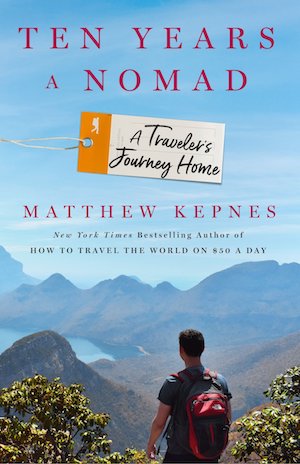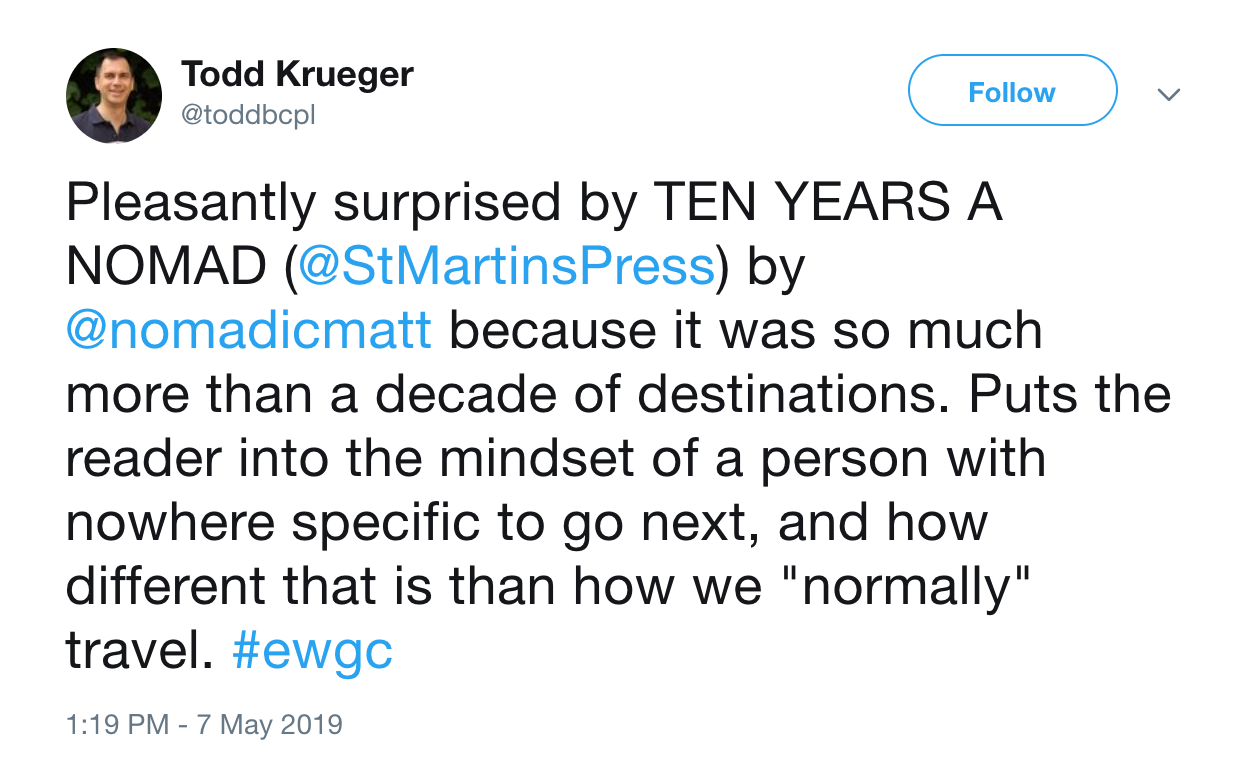
Posted: 6/22/2019 | June 22nd, 2019
Italy is home to incredible food (give me all the gnocchi and wine), rolling green hills, cultivated vineyards, incredible lakes and mountains, a long rich history dating back thousands of years, and welcome culture.
It is one of the most dynamic countries in the world and will live up to all the hype you’ve heard. It’s composed of 20 different regions, each with its own unique culture, cuisine, wine, and landscape. Italy is basically a confederation of different regional “countries and cultures.”
Because there’s so much to see and do in Italy (and not everyone has a lot of time), many travelers decide to take tours when they visit Italy.
I’ve done Italy on my own and with tour companies.
And there are A LOT of tour companies in Italy. Like way, way, way too many.
It can be very overwhelming deciding which Italy tour company to pick. I know. I’ve spent hours upon hours researching them all.
To help you plan your trip and really get beneath the surface of this amazing destination, I’ve compiled a list of my favorite tour companies in Italy.
Whether you’re looking for a basic walking tour or a multi-week excursion, these companies are the ones I think offer travelers the best experience at the right price.
Here are the nine best tour companies in Italy:
1. Rome Free Walking Tour
One of the best ways to get introduced to a destination is by taking a free walking tour. Rome Free Walking Tour offers a couple of different free tours each day, allowing you to tailor your visit to your interests. Each tour is around two hours.
The tours will give you a solid introduction to the history and culture of the Eternal City without overloading you with tons of extraneous details, and the guides are knowledgeable and can answer any questions. If you just want a quick overview of the city, this is the tour for you. Since the tours are free, be sure to tip your guides!
—> Click here to learn more about booking a tour with Rome Free Walking Tour!
2. Strawberry Tours
For free walking tours in Rome and beyond, check out Strawberry Tours. They organize tours (or collaborate with companies that run tours) in Rome, Florence, Milan, and Venice. You’ll be able to get a solid overview of each iconic city thanks to expert local guides. These free tours are 2-3 hours long, making them a great introduction to each destination. They also offer more in-depth paid tours if you’re looking to do something more unique, such as priority-access tours to the Uffizi Gallery in Florence or fully guided day trips to sites such as Pompeii. Paid tours start around 30 EUR per person, depending on the tour.
—> Click here to learn more about booking a tour with Strawberry Tours!
3. Context
Context offers comprehensive history, food, and cultural tours in half a dozen cities across Italy. These are intellectual walks packed with history, perfect for anyone looking to really get below the surface.
Context only hires experts to lead their tours, which is why their tours are some of my favorites. You’ll really get an in-depth look at each destination, and while their tours aren’t cheap, they are worth every penny if you’re serious about getting a nuanced and educational tour. Tours can range from a two-hour introduction to an eight-hour, full-day tour, so there’s something for every taste and interest level.
—> Click here to learn more about booking a tour with Context!
4. Italy Food Tours
This is one of the most highly rated food tour companies in Italy. They’ve been featured by Lonely Planet, National Geographic, Forbes, and many other popular publications. In short, they’re a perfect choice for anyone looking to really dig in and learn about Italy’s world-famous food cuisine. The food tours, drink tours, and pasta-making classes are guaranteed to give you an authentic local experience guided by experts who truly know their topics. They offer tours in Rome and Florence, with each generally lasting 3-4 hours. Tickets start at 75 EUR per person. They sell out fast, so be sure to book in advance!
—> Click here to learn more about booking a tour with Italy Food Tours!
5. Divina Cucina Culinary Experiences
Judy is an American expat who has been eating and drinking her way around Italy since the 1980s, and she has crafted some unique experiences for anyone looking to get under Italy’s culinary skin. Her private “Morning at the Market” tours in Florence will give you a nuanced look at Italy’s food culture and history, during which she shares her cooking tips and expertise. Judy also offers weeklong cooking intensives if you’re looking to really step up your Italian cuisine.
—> Click here to learn more about booking a tour with Divina Cucina Culinary Experiences!
6. Walks of Italy
If you’re looking for something a little more in-depth than a free tour, my favorite walking tour company in Italy is Walks. They are one of the largest day tour companies in Italy and offer tours in Rome, Milan, Florence, Venice, Pompeii, and the Amalfi Coast. What makes them so special is that they get access to places other people don’t, including before- or after-hours visits to some of the most popular sites in Italy (such as the Vatican or the Colosseum). In addition to historical tours, they also conduct food tours, vineyard tours, and even pasta-making classes. They are true experts and I love their tours. They are my favorite tour company in Italy.
Most tours last around four hours and start at around 60 EUR per person.
—> Click here to learn more about booking a tour with Walks of Italy!
7. Busabout
Busabout is a hop-on/hop-off bus service that has routes all around Europe. It’s a popular choice with the backpacker crowd, as you can not only explore the country but also get to meet and connect with other travelers. They offer routes around Italy, ranging from three to seven days, as well as routes around Europe that include Italy in their itinerary, so you can likely find something to suit your budget as well as your travel plans. Their stops in Italy include Rome, Ravello, Amalfi, Sorrento, Capri, and Pompeii. If you are looking to meet lots of people and not spend too much time worrying about your itinerary, then this is a great affordable option.
—> Click here to learn more about booking a tour with Busabout!
8. Travel Italian Style
My friend Cassandra runs this incredible bespoke travel company that creates customized trips to Italy. She’s been working in the tourism industry for well over a decade and has been to every single region of Italy. In short, she knows her stuff and can plan the perfect getaway for you. Vineyard tours, cooking classes, boutique accommodations — you’re guaranteed to experience life as a local with Cassandra’s tours. If you’re looking for an immaculately curated vacation to Italia, this is the tour company for you.
—> Click here to learn more about booking a tour with Travel Italian Style!
9. Intrepid Travel
This is my go-to travel company when I’m looking for multi-day or multi-week trips. They employ local guides with incredible insight and appreciation for the communities they take you to, and the groups are never too big. Plus, they only run ethical tours with a small environmental footprint. They last 8-15 days (including sailing trips!), with prices starting at 695 EUR per person. I’ve gone on some amazing tours with Intrepid over the years, including to Jordan, Morocco, and Madagascar, and have never been disappointed.
—> Click here to learn more about booking a tour with Intrepid Travel!
(As a Nomadic Matt reader, you’ll also get an exclusive discount; click on the link for the latest deals.)
Tantalizing food tours, charming visits to historic vineyards, deep dives into ancient history — you can find it all in Italy. Whether you’re looking for a quick introduction or an in-depth, multi-day adventure, these awesome Italian tour companies will help you have the trip you’ve always wanted.
Book Your Trip to Italy: Logistical Tips and Tricks
Book Your Flight
Find a cheap flight by using Skyscanner or Momondo. They are my two favorite search engines because they search websites and airlines around the globe so you always know no stone is left unturned.
Book Your Accommodation
You can book your hostel with Hostelworld. If you want to stay somewhere other than a hostel, use Booking.com as they consistently return the cheapest rates for guesthouses and cheap hotels. I use them all the time. My favorite places to stay are:
- The Yellow (Rome) – This is a great party hostel if you’re looking to have fun and meet people. The hostel is right above a nightclub, so if you’re looking for a quiet trip, don’t stay here!
- Ostello Bello (Milan) – This hostel is in a great location, the staff are wonderful, and they have free breakfast included.
- Ostello Archi Rosso (Florence) – This is a basic budget hostel that’s affordable and in a great location. The staff are friendly and there is a restaurant onsite as well.
Don’t Forget Travel Insurance
Travel insurance will protect you against illness, injury, theft, and cancellations. It’s comprehensive protection in case anything goes wrong. I never go on a trip without it as I’ve had to use it many times in the past. I’ve been using World Nomads for ten years. My favorite companies that offer the best service and value are:
- World Nomads (for everyone below 70)
- Insure My Trip (for those over 70)
Looking for the best companies to save money with?
Check out my resource page for the best companies to use when you travel! I list all the ones I use to save money when I travel – and I think will help you too!
Want More Information on Italy?
Be sure to visit our robust destination guide on Italy for even more planning tips!
The post The Best Tour Companies in Italy appeared first on Nomadic Matt's Travel Site.






